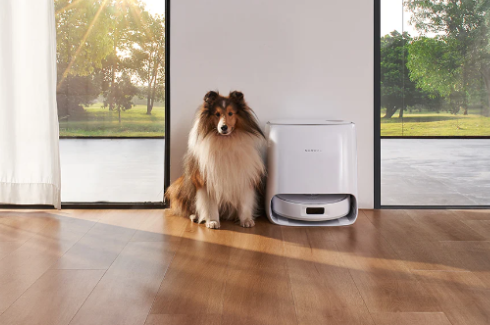Can Cleaning Robots Work in Extreme Temperatures? How They Handle Hot and Cold Environments

Cleaning robots have become increasingly popular due to their ability to handle household chores with minimal human intervention. But as these robots continue to evolve, one key question arises: can they perform effectively in extreme temperatures?
Whether it’s scorching heat or freezing cold, understanding how a robot vacuum and mop can operate in these environments is crucial for users in different climates.
In this article, we will explore how cleaning robots are designed to handle extreme temperature conditions. We will also examine the challenges these machines face in both high and low temperatures, and how modern technology helps them adapt.
Effects of High Temperatures on Cleaning Robots
Extreme heat can pose a significant challenge for cleaning robots. High temperatures can cause components, such as batteries and electronic circuits, to overheat. This is particularly true in homes located in regions where summer temperatures rise above 35°C (95°F).
The main issue with overheating is that it can cause the robot to shut down unexpectedly. Most robots are equipped with temperature sensors that force an automatic shutdown if they detect that the internal temperature is too high. This mechanism protects the internal components from long-term damage. However, it can be inconvenient for users, as the robot might pause in the middle of a cleaning session.
Additionally, the efficiency of a robot vacuum and mop may drop in high heat due to battery drainage. When batteries heat up, they tend to lose charge faster. This could shorten the cleaning cycle and reduce overall performance. To mitigate this, some robots feature cooling fans or ventilation systems to help maintain optimal operating temperatures.
Strategies for Hot Climates
To improve performance in hot climates, users can take a few preventive measures. For instance, scheduling the robot to clean during the cooler parts of the day, such as early morning or late evening, can reduce the chances of overheating. Additionally, keeping the charging station in a well-ventilated and shaded area can also help.
Another tip is to ensure that the robot’s filter is cleaned regularly. Dust and debris buildup can block airflow, causing internal components to heat up more quickly. Routine maintenance can go a long way in improving the longevity of a robot in hot conditions.
Challenges in Freezing Temperatures
On the other end of the spectrum, freezing temperatures can also present problems for cleaning robots. In cold environments, electronic components can become brittle, increasing the likelihood of mechanical failure. Cold temperatures can also negatively impact the battery life of a robot vacuum and mop, leading to a shortened runtime.
The main challenge is that most cleaning robots are designed for indoor use, where temperatures are typically controlled. If the robot is stored or operated in a garage or outdoor setting where temperatures drop below 0°C (32°F), its performance could suffer. Cold weather can cause the battery to lose its ability to hold a charge, meaning the robot will need more frequent charging.
Solutions for Cold Climates
To counteract the effects of cold weather, it’s essential to keep the robot indoors and in a well-regulated environment. If the cleaning robot is left in a cold space for extended periods, allow it to warm up to room temperature before operation. This can prevent condensation from forming inside the machine, which could lead to electrical issues.
Users in colder regions should also consider using a cleaning robot with enhanced insulation or weather-resistant features. While most models aren’t built specifically for extreme cold, some are better equipped to handle lower temperatures due to their more robust designs.
The Importance of Temperature Sensors and Smart Technology
One of the most important features in cleaning robots designed for various climates is the inclusion of temperature sensors. These sensors monitor the internal temperature of the machine and adjust its operation accordingly. In some cases, the robot may slow down or pause its task to prevent overheating or freezing.
Additionally, smart technology in cleaning robots allows for better adaptability to different environments. For instance, robots equipped with advanced sensors can detect changes in temperature and modify their cleaning patterns. This ensures that the robot vacuum and mop can continue to perform effectively, even in less-than-ideal conditions.
Conclusion
Cleaning robots are remarkable devices that bring convenience to many households. However, when it comes to extreme temperatures, both hot and cold, their performance can be affected. High temperatures can cause overheating and battery issues, while freezing temperatures can reduce battery efficiency and damage electronic components.
By taking preventive measures and choosing a robot equipped with temperature sensors and smart technology, users can ensure their robot vacuum and mop continues to operate efficiently, regardless of the environment. Understanding these challenges and solutions will help users make informed decisions on how to best care for their cleaning robots in different climates.

